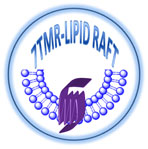Ligand-induced partitioning of human CXCR1 chemokine receptors with lipid raft microenvironments facilitates G-protein-dependent signaling
| Title | Ligand-induced partitioning of human CXCR1 chemokine receptors with lipid raft microenvironments facilitates G-protein-dependent signaling |
| Publication Type | Journal Article |
| Year of Publication | 2005 |
| Authors | Jiao, X, Zhang N, Xu X, Oppenheim JJ, Jin T |
| Journal | Mol Cell Biol |
| Volume | 25 |
| Pagination | 5752-62 |
| Date Published | Jul |
| ISBN Number | 0270-7306 (Print)0270-7306 (Linking) |
| Accession Number | 15964828 |
| Keywords | *Signal Transduction, Blotting, Western, Cell Line, Fluorescence Recovery After Photobleaching, Fluorescence Resonance Energy Transfer, Fluorescent Dyes, Green Fluorescent Proteins, Heterotrimeric GTP-Binding Proteins/*metabolism, Humans, Image Processing, Computer-Assisted, Interleukin-8/analysis/metabolism, Ligands, Membrane Microdomains/*metabolism, Models, Biological, Phosphorylation, Receptors, Interleukin-8A/*metabolism |
| Abstract | Ligand binding to a chemokine receptor triggers signaling events through heterotrimeric G-proteins. The mechanisms underlying receptor-mediated G-protein activation in the heterogeneous microenvironments of the plasma membrane are unclear. Here, using live-cell fluorescence resonance energy transfer imaging to detect the proximity between CXCR1-cyan fluorescent protein (CFP) and fluorescence probes that label lipid raft or non-lipid raft microdomains and using fluorescence recovery after photobleaching analysis to measure the lateral diffusion of CXCR1-CFP, we found that interleukin-8 induces association between the receptors and lipid raft microenvironments. Disruption of lipid rafts impaired G-protein-dependent signaling, such as Ca2+ responses and phosphatidylinositol 3-kinase activation, but had no effect on ligand-binding function and did not completely abolish ligand-induced receptor phosphorylation. Our results suggest a novel mechanism by which ligand binding to CXCR1 promotes lipid raft partitioning of receptors and facilitates activation of heterotrimeric G-proteins. |
| URL | http://www.ncbi.nlm.nih.gov/entrez/query.fcgi?cmd=Retrieve&db=PubMed&dopt=Citation&list_uids=15964828 |
